BILL MINER REVISITED 30 YEARS LATER
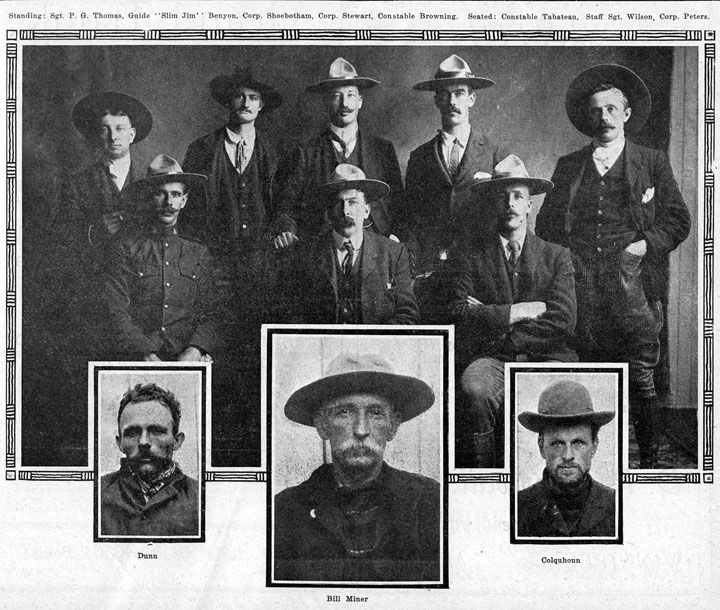
Our fascination for colourful characters in our past is topped by the adventures of Bill Miner; Train Robber and Philanthropist. This text is from the 1937 anthology of the R.C.M.P., “The Scarlet and the Gold.”
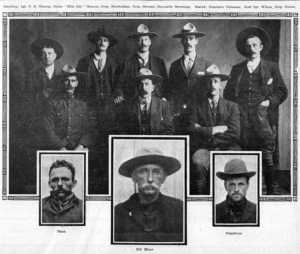
Had Courtesy For Victims
Thirty years ago, on May 14, 1906, Bill Miner, notorious train robber, was captured in the wilds of the interior of British Columbia, thereby adding to the laurels previously won by the Royal North West Mounted Police. This is the story of the capture of a modern Robin Hood – a man reputed to have
stolen more than $500,000 in his life time and who gave liberally to the poor.
Bill Miner was widely known early in the century, as a daring robber and enjoyed a distinction rivaling that of the legendary Robin Hood. He robbed the rich and gave money to the poor. To the recipient of his gifts, Miner was a kindhearted friend who went away prospecting at certain intervals and came back to spread happiness, leaving the laughter of happy children in his wake.
The late Staff Sergeant J.J. Wilson, of Calgary, led the detachment of seven Mounted Police from Calgary into the wilds, in pursuit of the bandits, headed by Miner, who held up a C.P.R. Train at Ducks (Pritchard), near Kamloops, B.C., on May 8, 1906. Prior to that, Miner was responsible for a holdup at Mission Junction, B.C., on September 2, 1904, and got a haul of $45,000 in bonds.
The neighbourhood had been terrorized.
Robbers bristling with guns; cool and calculating in their operations, had uncoupled the mail car from the rest of the train and left the passengers stalled in their cars on the main line, while the front section was run down the grade a few miles for the purpose of dynamiting the safe. But it was a faulty judgement on Miner’s part. He slipped up on information that the train carried $160,000 destined for the needy residents of San Francisco, following the earthquake. That train had passed a few hours before, and this daring coup turned out a hopeless failure.
A few days after the robbery instructions were received at Calgary R.N.W.M.P. Headquarters to send a detachment to join in the search for Miner and his two companions, Shorty Dunn and Louis Colquhoun. The party left Calgary; headed by Staff Sergeant Wilson, on May 10, 1906. Two days later the police party rode in the direction of Grande Prairie (Westwold); about 100 miles south of Kamloops, where they understood Miner and his men had been seen recently. Miner had worked on a ranch in this district and it was believed he would head for the vicinity after the job at Ducks.
The party was nearing Douglas Lake, about 85 miles south of Kamloops, when Constable Fernie of the B.C. Police was encountered. He said he had seen three men answering the description of the fugitives crossing a road not far down the trail.
The police found the men and surrounded them. Among them was Bill Miner. He was told that he and his men answered the description of the bandits responsible for the train holdup at Ducks. When told that they would be taken in for investigation, Shorty Dunn opened fire on Sergeant Wilson. The bullet just grazed his left side. Then all the policemen pulled their guns. Sergeant Wilson covered Miner, and one of the other policemen covered Colquhoun. Dunn fired again and bolted into the bush. Here he plunged into a ditch and sank waist-deep in the mud. He was stuck and gave up. He had been wounded in the leg.
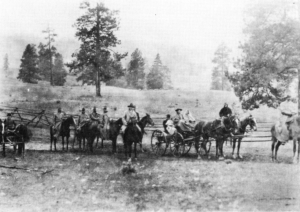
Miner and Colquhoun were bound with rope around their waists and marched away. Dunn was carried. They were convicted and sentenced by Judge Hunter at Kamloops.
A year later, Miner and his companions escaped from New Westminster prison. He went to the United States and pulled another holdup which netted him enough to go on an extended tour of Europe.
Upon his return he engaged in a few more railway robberies in the United States. Then he encountered a widow with a large family. She was penniless and about to lose her home. Bill Miner cleared the mortgage with all the money he had left, telling her a story about having been an old friend of her late husband. Miner, in his earlier days, preyed upon stage coaches conveying gold to Denver, Colorado. He always apologized to the passengers for the inconvenience to which they were put.
One of the mounted squad responsible for the capture of the notorious outlaw was Sergeant P.G. Thomas of the R.N.W.M.P. For many years, Sergeant Thomas, now Magistrate P.G. Thomas; has been acting in a judicial capacity in the town of High River, Alberta. Corporal C.R. Peters, who also aided in the capture, is now an Inspector with the R.C.M.P., stationed at Ottawa.
Three other “Mounties” responsible for bringing Bill Miner to justice, at least temporarily, are now dead. Staff Sergeant J.J. Wilson, of Calgary, was killed in an automobile accident east of High River on March 13, 1933. Superintendent T.M. Shoebotham, a corporal at the time of the capture of Miner, died in Dawson City on January 27, 1927 while still with the force. He was stationed at Calgary and in Regina. Constable S. Steward died many years ago.
“There’s one thing. I never killed a man in my life,” Miner is reported to have said before he died. Shorty Dunn and Louis Colquhoun died many years ago.

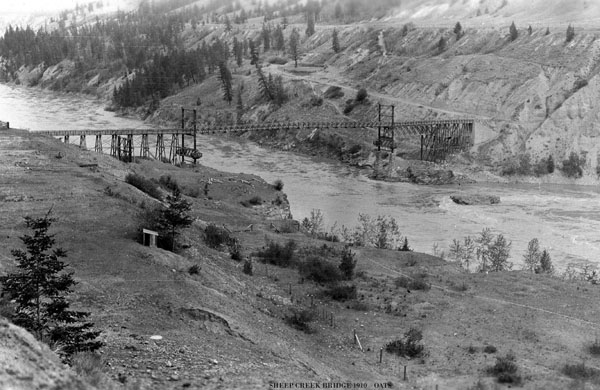
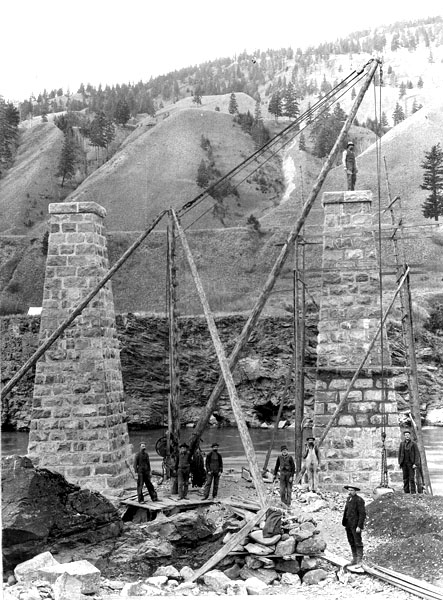
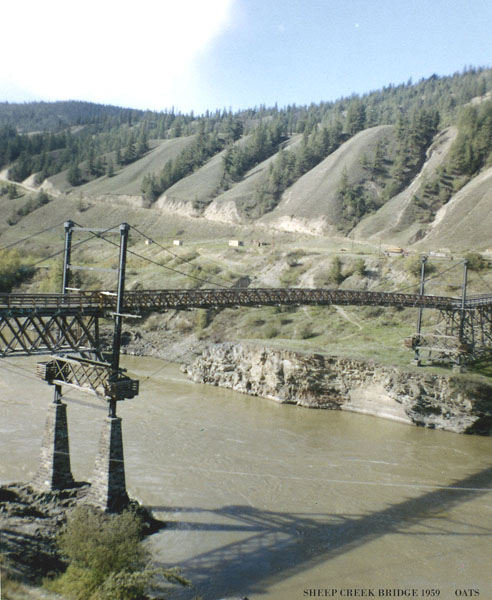
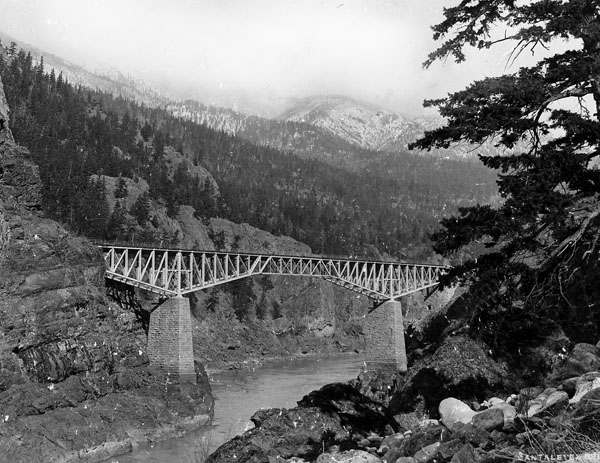
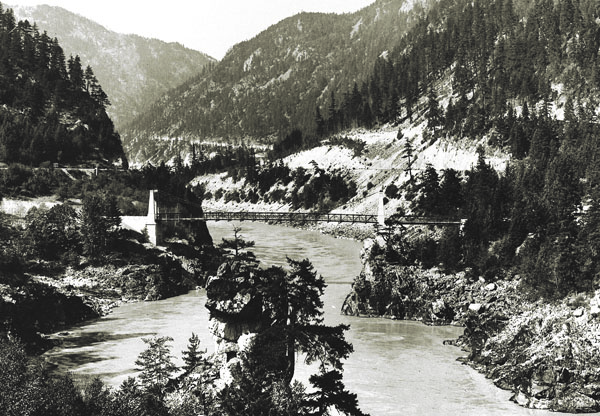
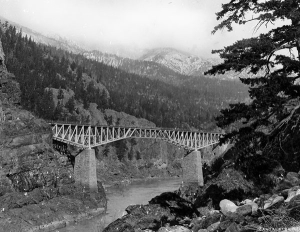
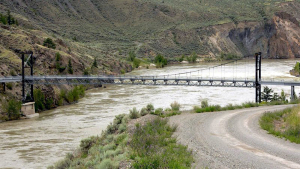
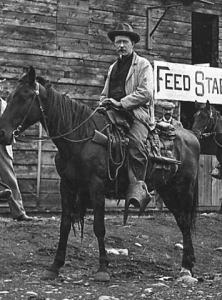
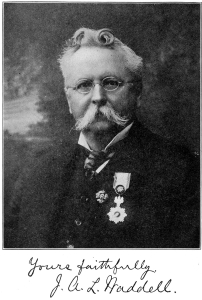 Now let’s put this project into perspective. The Provincial Government of the day led by Premier Edward Prior; was petitioned to build this bridge by a voting population of 40 white males, the total eligible voters of the Chilcotin. They insisted the bridge would bring prosperity to the entire heartland of the Province, and enable the production of cattle and sheep to feed the world.
Now let’s put this project into perspective. The Provincial Government of the day led by Premier Edward Prior; was petitioned to build this bridge by a voting population of 40 white males, the total eligible voters of the Chilcotin. They insisted the bridge would bring prosperity to the entire heartland of the Province, and enable the production of cattle and sheep to feed the world.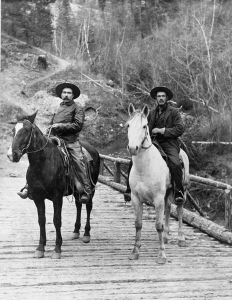
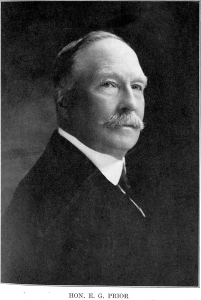 The Legislature was livid and called for his head, but Premier Prior wouldn’t resign. Prior’s gentry was his downfall as he stated he was privileged as a Militia Colonel
The Legislature was livid and called for his head, but Premier Prior wouldn’t resign. Prior’s gentry was his downfall as he stated he was privileged as a Militia Colonel